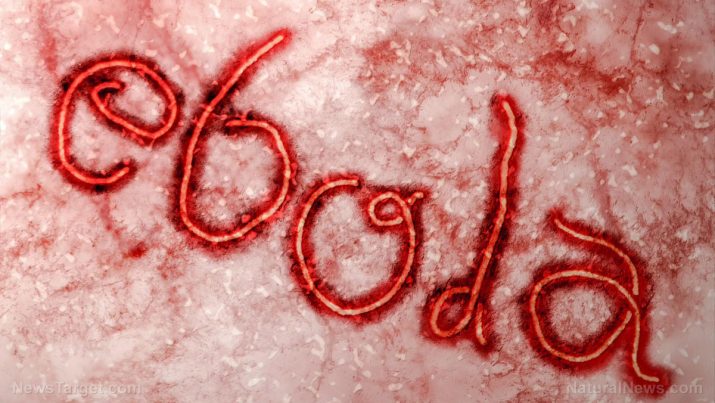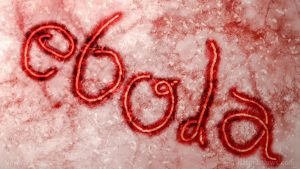
Ebola hemorrhagic fever — causes, side effects and treatments at NaturalPedia.com
Saturday, March 10, 2018 by Rhonda Johansson
http://www.naturalpedia.com/ebola-hemorrhagic-fever-causes-side-effects-and-treatments-at-naturalpedia-com.html

The largest outbreak of Ebola occurred in 2014 to 2015 in west Africa, particularly in the countries of Guinea, Liberia, and Sierra Leone. Despite the vast number of people dying from the disease (in the end, around 11,000 deaths were attributed to the viral outbreak), locals in the affected countries insisted that Ebola was not a real thing. This prompted musicians Samuel “Shadow” Morgan and Edwin “D-12” Tweh to collaborate and release their hit single, “Ebola in Town” which forced residents of western Africa to acknowledge the deadly disease. The musical tactic worked and health officials saw more people taking preventive measures against Ebola after the track circulated the airwaves.
When the outbreak was officially declared over in June 2016, residents of Sierra Leone paraded the streets, dancing to rapper Block Jones’ song, “Bye Bye Ebola”. The World Health Organization (WHO), nevertheless, cautions against believing that Ebola (or the Ebola hemorrhagic fever) has disappeared forever. The virus appears to manifest itself every few decades.
It was first discovered in 1976 near the Ebola river (which is located in what is now the Democratic Republic of Congo). Since then, it has appeared randomly, infecting people and often causing several villages to go under quarantine. Epidemiologists still do not know where the virus comes from but believe it to be animal-borne, with bats being the most likely source.
The virus spreads to people through direct contact with bodily fluids of an infected person. As such, Ebola may be transmitted through sexual contact as well.
Those who survive Ebola often experience side effects such as perpetual tiredness, muscle aches, and eye and vision problems. There is also a stigma attached to being an Ebola survivor.
Known side effects of Ebola hemorrhagic fever
Ebola is a severe and often fatal disease. The viral infection has an incubation period of only one to two days, after which patients can begin developing symptoms such as:
- High fever
- Severe headache
- Joint and muscle ache
- Weakness
- Diarrhea
- Vomiting
- Lack of appetite
- Stomach ache
Ebola causes the body to hemorrhage. In its late forms, Ebola will cause the extremities to blacken and the pupils to develop blood spots. Infected people will also begin expelling out blood through vomiting or diarrhea. Blood may also come out of the ears, eyes, nose, or mouth.
People die of dehydration due to contracting Ebola.
Body systems harmed by Ebola hemorrhagic fever
The virus affects the whole body. Ebola forces blood cells to spontaneously combust and perform abnormally. This causes severe internal bleeding.
Food items or nutrients that may prevent Ebola hemorrhagic fever
There is no standardized cure for Ebola but some nutrients can treat certain symptoms which increases the chance of recovery. Converging evidence on the infection state that patients must continuously be given fluid and food that maintains blood pressure to counteract hemorrhaging.
- Vitamin C — The vitamin stimulates the production of white blood cells which helps fight viral pathogens. Ascorbic acid likewise eliminates the presence of free radicals in the body, improving the overall function of the immune system.
- Vitamin A — This is a powerful antioxidant that was used as a supplemental treatment for Ebola.
- Vitamin D — This is another important immune system-boosting vitamin that the body needs to fight off infections.
- Curcumin — The active component in turmeric, curcumin protects the immune system from being compromised.
Treatments, management plans for Ebola hemorrhagic fever
Patients are immediately given intravenous fluids. Supportive therapies may also be taken to treat the patient’s specific symptoms. These may include blood products and drugs to boost the immune system.
Individuals are asked to take the necessary precautions to reduce human transmission. These include:
- Reducing contact with infected fruit bats or monkeys/apes in known high-risk areas. This includes consuming their meat.
- Reducing contact with infected people, particularly with their bodily fluids. Do not have sex with an Ebola patient.
- Immediately burying the dead.
- Washing hands frequently and practicing other good hygiene practices.
Where to learn more
- CDC Is NOT Incompetent With The Ebola Crisis
- Ebola conspiracy theories abound: GMO bioweapon? DoD experiment gone wrong? Five incredible theories explored
- Ebola outbreak may already be uncontrollable; Monsanto invests in Ebola treatment drug company as pandemic spreads
- Ebola outbreak projections for the United States defy CDC’s false assurances
- Ebola transmission by aerosols confirmed: virus survives for days outside infected hosts
Summary
Ebola hemorrhagic fever is a virus that causes internal bleeding and death.
It is suspected to be animal-borne and is transmitted to humans through contact with bodily fluids.
It is mostly centered in the western parts of Africa but international travel has made the virus more deadly as chances of it spreading have increased.
Sources include:
Tagged Under: Tags: Ebola hemorrhagic fever






